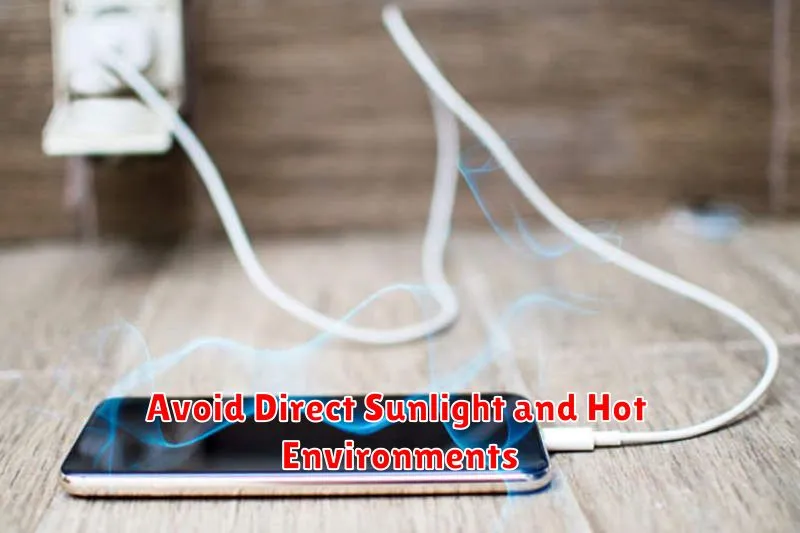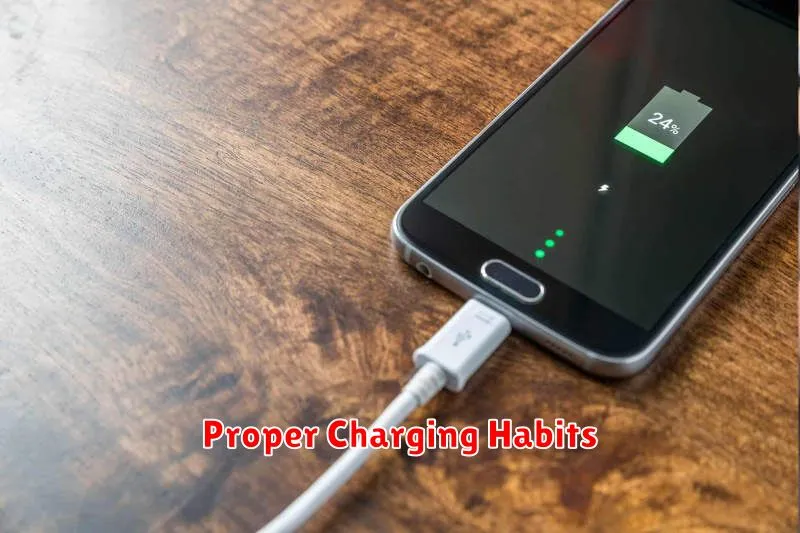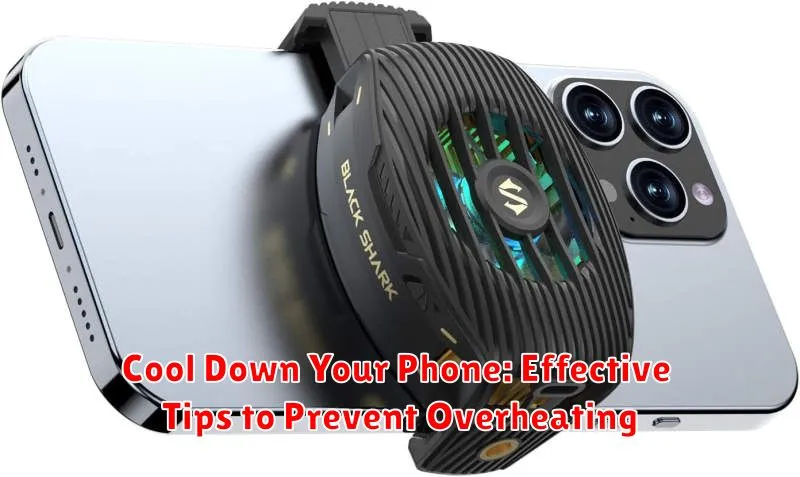Is your phone constantly feeling like a hot potato? Overheating can significantly impact your phone’s performance, battery life, and even cause permanent damage. In this article, we’ll explore the most effective tips to cool down your phone and prevent it from overheating in the future. Learn how to identify the common causes of overheating, from demanding apps and excessive gaming to environmental factors, and discover practical solutions to keep your device running smoothly and safely.
Don’t let overheating slow you down. From adjusting your settings and managing your app usage to utilizing cooling accessories and understanding the importance of proper ventilation, this guide will provide you with the knowledge and tools necessary to combat overheating and maintain your phone’s optimal temperature. Discover how to cool down your phone quickly and effectively while also implementing preventative measures to ensure long-term device health and performance. We’ll cover everything from identifying resource-intensive apps to understanding the role of your phone’s case in heat dissipation.
Understanding Why Phones Overheat
Smartphones generate heat as a byproduct of their normal operation. Much like a computer, phones utilize a central processing unit (CPU) and a graphics processing unit (GPU) to execute tasks and render images. These components generate heat as they perform calculations and process data. The more demanding the tasks, the more heat produced.
This heat is typically dissipated through the phone’s casing and other components. However, under certain conditions, the heat generated can exceed the phone’s ability to dissipate it effectively, leading to overheating.
Think of your phone’s components like a car’s engine. When you push the engine hard, it generates more heat. If the cooling system isn’t efficient, the engine can overheat. Similarly, when you run demanding applications or games on your phone, the processor works harder and generates more heat. If the phone’s design or external factors hinder heat dissipation, the phone’s temperature can rise significantly.
Identifying Common Causes of Overheating
Pinpointing the cause of your phone’s overheating can help you implement the right solution. Several factors contribute to excessive heat buildup.
Demanding applications: Resource-intensive apps, especially graphically demanding games or video editing software, push your phone’s processor and GPU, generating significant heat.
Streaming: Extended periods of streaming video or music can also strain your phone’s resources, leading to higher temperatures.
Malfunctioning battery: A faulty or aging battery may struggle to manage power efficiently, resulting in excess heat generation. If your phone consistently overheats, even with light usage, a failing battery could be the culprit.
Malware: Malicious software running in the background can consume significant processing power, causing the device to overheat. Ensure you have reliable anti-malware software installed.
Avoid Direct Sunlight and Hot Environments

Direct sunlight and hot environments are major contributors to phone overheating. Never leave your phone in direct sunlight, such as on the dashboard of a car on a hot day. The enclosed space and magnified sunlight can cause the phone’s internal temperature to rise rapidly, potentially damaging the battery and other components.
Similarly, avoid leaving your phone in other hot environments like near a heater or in a closed, hot bag. Elevated ambient temperatures make it harder for your phone to dissipate heat effectively. If you’re spending time outdoors on a hot day, try to keep your phone in a shaded area or in a cool pocket or bag. Even on cooler days, be mindful of where you place your phone, avoiding spots that could trap heat.
Close Unused Apps and Background Processes
Many apps continue running in the background even after you’ve exited them. These background processes consume processing power and battery life, contributing to heat buildup. Regularly closing unused apps can significantly reduce your phone’s operating temperature.
Most smartphones offer a way to view and close currently running apps. Access this feature through your phone’s recent apps menu or settings. Force-stopping persistently problematic apps can further alleviate the issue.
Limiting background processes is also crucial. While some background activity is essential for app functionality, restricting unnecessary processes can improve performance and reduce overheating. Check your phone’s settings to manage background data usage and app permissions.
Limit Resource-Intensive Tasks
Demanding applications and processes contribute significantly to phone overheating. Gaming, video editing, and streaming high-definition content push your phone’s processor and graphics unit, generating substantial heat.
To mitigate this, be mindful of how many resource-intensive tasks you’re running concurrently. Avoid playing graphically demanding games while also streaming music and using GPS navigation, for instance.
Consider closing apps you’re not actively using. Even when minimized, some apps continue to consume processing power in the background, contributing to heat buildup.
For extended gaming sessions, consider lowering the game’s graphical settings. Reducing the resolution and detail can significantly lessen the processing load, and therefore the heat generated.
Manage Brightness and Screen Timeout
Screen brightness is a major contributor to battery drain and heat generation. Lowering your screen’s brightness significantly reduces the workload on your phone’s processor, thus producing less heat. Access your phone’s display settings and adjust the brightness slider to a comfortable yet lower level. Consider enabling the auto-brightness feature, which automatically optimizes the screen brightness based on the ambient light.
The screen timeout setting determines how long your phone’s display stays on after you last interact with it. A shorter screen timeout prevents the display from staying on unnecessarily, consuming power and generating heat. Reduce the screen timeout duration in your phone’s display settings. Even a small reduction, like from one minute to 30 seconds, can make a noticeable difference in preventing overheating over time.
Use a Protective Case Wisely
While phone cases offer valuable protection against drops and scratches, some can inadvertently contribute to overheating. Thick, insulating cases can trap heat generated by the phone, preventing proper dissipation. Consider the material of your case. Some materials, such as leather or certain plastics, insulate more than others.
If you notice your phone overheating, especially during demanding tasks, try removing the case temporarily to see if it makes a difference. If you live in a hot climate or frequently use your phone for resource-intensive activities, consider using a thin case made of a breathable material or forgoing a case altogether in favor of other cooling solutions.
Choosing the right case is a balance between protection and heat management. If a case is necessary for your lifestyle, prioritize those designed with thermal considerations or opt for slimmer profiles.
Turn Off Unused Features (GPS, Bluetooth, etc.)
Many features on our smartphones consume power and generate heat even when not actively in use. Disabling these features when not needed can significantly reduce your phone’s operating temperature. Location services (GPS), while helpful for navigation and location-based apps, are notorious for battery drain and heat generation. Switch it off when you don’t need precise location tracking.
Bluetooth, while convenient for connecting to wireless devices, also contributes to power consumption and heat. If you’re not using a Bluetooth device, disable it in your phone’s settings. Similarly, features like Wi-Fi and mobile hotspot should be turned off when not required. These features constantly search for and maintain connections, which can strain your phone’s processor and increase its temperature.
By proactively managing these unused features, you can effectively reduce your phone’s workload and keep it running cooler. Making this a regular practice can contribute significantly to preventing overheating issues.
Keep Your Software Updated
Outdated software can sometimes contribute to overheating. Operating system (OS) updates and app updates often include performance improvements and bug fixes that can optimize resource usage and reduce strain on your phone’s processor. These improvements can lead to lower operating temperatures.
It’s important to regularly check for and install these updates. Typically, your phone will notify you when updates are available. You can also manually check for system updates in your device’s settings.
Proper Charging Habits

Charging your phone correctly plays a significant role in preventing overheating. Avoid leaving your phone plugged in for extended periods after it reaches 100%. This generates unnecessary heat and can degrade the battery over time.
Use the correct charger. Counterfeit or improperly manufactured chargers may not regulate power efficiently, leading to overheating. Stick to the charger provided by your phone’s manufacturer or a reputable alternative that’s certified to work with your device.
Don’t charge your phone in extremely hot or cold temperatures. Both extremes can negatively impact battery performance and increase the risk of overheating during charging.
If you notice your phone getting excessively hot while charging, unplug it and let it cool down. This might indicate a problem with the charger, the battery, or the phone itself. Consider having your device inspected by a professional if the issue persists.

